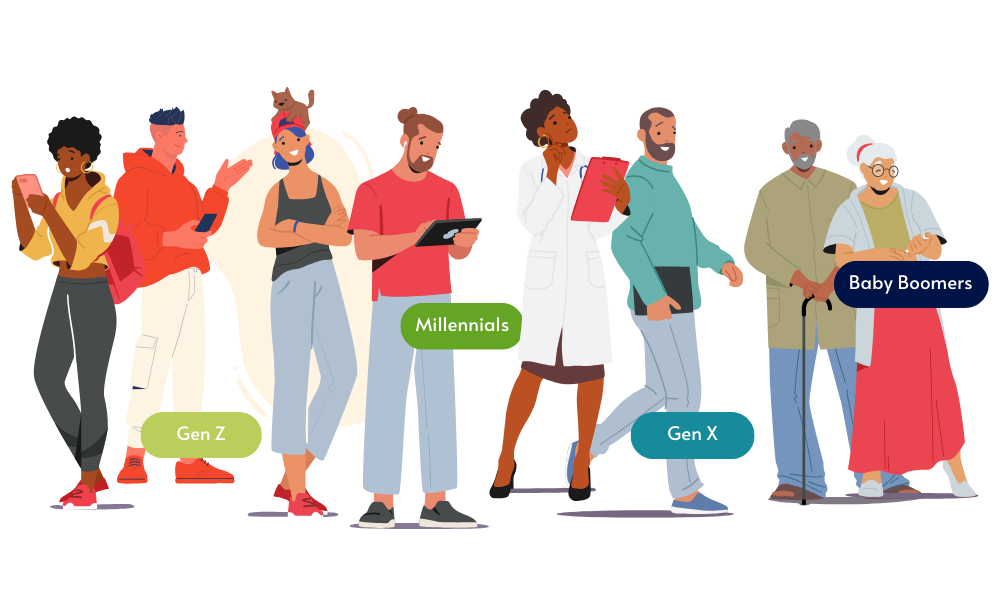The pandemic brought radical economic change. Much like any major event through history, disasters often bring social and economic issues to the forefront of the conversation.
As employers, we’re in a difficult position, we’re facing change dead in the eye. We’re asked to decide; are these passing trends? Or are they things we simply can’t ignore?
When we’re already battling price rises, supply chain issues and staff shortages, it can be easy to say that trends in staff demands aren’t a priority. However, it’s important to understand the complexity and size of the movement.

What’s the Driver Behind Worker’s Rights Trends?
We’ve talked in the past about the anti-work movement, but if you’re new here, here’s a quick low-down:
The Anti-Work Movement
In it’s simplest terms, the anti-work movement is a trending topic hosted on Reddit (an online forum), that holds the core premise that the current system of “work” exploits those who are lower down the economic system. At it’s most extreme, it fuels the “great resignation”, but in general, most of it’s followers do want to work and earn.
In fact, it states very clearly that it’s objective is: “to start a conversation, to problematize work as we know it today.”
So it really comes down to an easy to understand concept, workers don’t want to be unhappy, underpaid and overworked. They want to be valued, respected and want to gain a respectable work-life balance.
Where in the past, many might have seen the movement as a extreme of socialism, post-pandemic, people are feeling more sympathetic.
Think about it, workers have been contending with:
- Working harder to cover workload generated by staff absence.
- Putting themselves at risk of catching the virus.
- Dealing with increasingly irate customers, as we all feel the stress of the pandemic.
- Economic inflation with little or no rise in salary.
- Years of minimum wage not keeping up with the ‘cost of living’.
Don’t get me wrong, the solution isn’t as simple as raising worker’s wages. Most businesses can’t afford to do that without going bust. But it certainly is food for thought.
And now, as employers, we’re also dealing with an employee’s market when it comes to jobs.
Now that many more companies are opening up work-from-home opportunities, there’s a greater choice of roles for those who are seeking. Employers are dealing with a supply and demand issue. Roles that had hundreds of applications just a few years ago, are now struggling to get an ounce of that interest.
Workers are frustrated. We as employers can justify it however we like, we can believe the economics of the pandemic should mean there are plenty of workers looking for roles, but that doesn’t change the core facts of employee sentiment.

The Gap Between Rich and Poor
Social justice. It’s an unstoppable tide. When we see one extreme, like Trump gaining an election for example, we’ll see the other extreme rise.
America’s protests didn’t inspire socialist thinking in other countries, it highlighted it. Here’s a few interesting facts to consider, as detailed by The Washington Post:
- Right now, the emerging worker market is primarily in millennials, and we’re starting to see the first of Gen-Z enter the labour market.
- The average millennial has experienced slower economic growth than any other generation since the 1790s.
- During the pandemic, a third of all jobs belonging to Gen-Z were removed from the market.
- Millennials make up the largest proportion of the employment market, but they only own about 4-5% of total economic wealth. That’s 4 times less than a like-for-like comparison of “Boomers” when they entered the workforce.
- Millennials have endured two major recessions, putting many of them behind their projected job levels and salaries. Many settled for lower-level roles at the start of their career, despite their level of education.
So there’s plenty of reason to be a bit fed-up and disillusioned.
But here’s the kicker, if we as businesses can’t pay more without putting ourselves out, what is the solution?
Worker Incentives in 2022

Working From Home
We host a lot of job adverts here at NTG, and we’ve clearly seen that the interest in working-from-home roles is monumental. In fact, page views for a recent work-from-home role surpassed 3 times the amount of traffic we had for our next most popular vacancy.
During the pandemic, workers experienced the benefits of home working – a reduction in travel costs, comfort, family time, a lack of a commute – the list goes on. Although it didn’t appeal to everyone, there’s no denying that the majority of workers favoured this set-up. Especially those below manager level.
If you’re advertising an entry-level role, it’s well worth considering if you can offer it on a full or part-time basis at home. You could even commit the first few months to being in the office while training commences, then offer a work-from-home review as standard.

The 4-Day Work Week
4 Day Week Global is a non-profit community on a mission to change the future of work. Fundamentally, they push the idea that working for 4 days as standard, rather than the usual 5, leads to greater employee happiness, lower levels of stress, higher interest in job roles, reduces employee burnout, and most importantly; does not lead to a significant drop in overall productivity.
In some industries, it’s probably not yet viable to have a 4-day week, but in office-based roles, the research backs up the claims.
Microsoft trialled the concept and found that they actually had a 40% rise in productivity.
As the community reports, 100 years ago we switched from working 6-days a week to working 5. With the advances in technology we now have, shouldn’t we be able to manage our workload in 4 days with a few simple changes?
Just to be clear, moving to a 4-day work week does not mean a reduction in pay – it means workers get the same salary but work less days. It sounds like it couldn’t possibly work, but the results are extremely positive. Why not consider a trial to find out for yourself?

Training and Development Pathways
Many millennials will tell you a simple fact about the job market – it’s no longer linear. If you want a pay rise or a promotion, generally you need to move roles.
So why not consider mapping out career progression for the roles you have available, right from the start.
If you’re hiring for an entry level role, why not combine it with an apprenticeship programme, so that your employee also actively gains new skills and becomes more valuable to you over time.
You could even write in a contractual review of their role, dependant on training completion.
Having certainty that you can grow and develop in the job that’s been made available to you? Now that’s a good deal!
How will you be incentivising new roles this year? We’d love to hear your thoughts.






